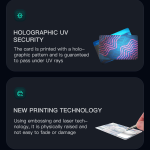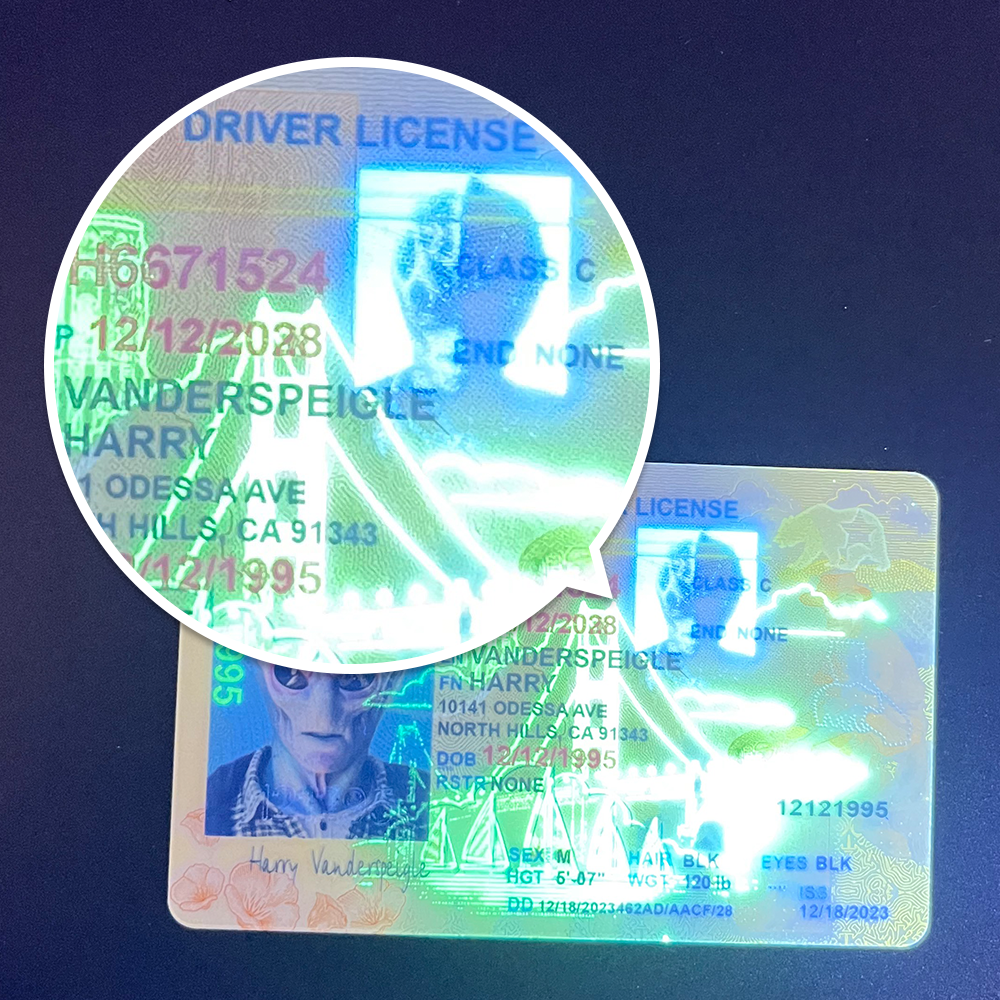Identity verification has always been a crucial aspect of modern – day society. It ensures security, enables access to various services, and maintains the integrity of systems. In recent years, the concept of Real ID and the emerging technology of infrared – based ID verification have been at the forefront of discussions in the identity management domain.
Understanding Real ID
Real ID is a federal standard for state – issued driver’s licenses and identification cards in the United States. It was established in response to the 9/11 Commission’s recommendations to enhance security and improve the reliability of identification documents. A Real ID is designed to meet specific security requirements, including stricter proof – of – identity and proof – of – residency requirements during the application process.
When an individual applies for a Real ID, they are typically required to provide multiple forms of identification, such as a birth certificate, social security card, and proof of address. These documents are carefully verified to ensure that the person is who they claim to be. The Real ID card itself also has enhanced security features, such as holograms, microprinting, and embedded chips, making it more difficult to counterfeit or tamper with.

The implementation of Real ID has significant implications for various sectors. For example, in the transportation industry, starting from a certain date, individuals need a Real ID to board domestic flights within the United States. This has led to an increased focus on the accuracy and security of identity verification processes at airports and other transportation hubs.
The Basics of Infrared – Based ID Verification
Infrared – based ID verification is a technology that uses infrared light to capture and analyze unique physical characteristics of an individual for identity verification purposes. One of the most common applications is in biometric identification, such as fingerprint or iris recognition using infrared imaging.
When it comes to fingerprint verification, infrared light can penetrate the outer layer of the skin and capture the underlying ridge patterns more clearly. This is because infrared light is not affected by surface dirt, moisture, or minor abrasions as much as visible – light – based systems. The captured fingerprint image is then compared to a pre – stored template in a database to determine if there is a match.
In iris recognition using infrared, the unique patterns in the iris are illuminated with infrared light. The iris has highly detailed and stable patterns that are unique to each individual, even between identical twins. The infrared – based system can accurately capture these patterns and perform a highly accurate identity verification process. The advantage of using infrared in iris recognition is that it can work effectively in different lighting conditions, including low – light or dark environments.
The Intersection of Real ID and Infrared – Based ID Verification
As Real ID requirements become more stringent, there is a growing interest in integrating advanced technologies like infrared – based ID verification to enhance the security and efficiency of the identity verification process. For example, at government agencies where Real ID applications are processed, infrared – based biometric scanners could be used to quickly and accurately verify the identity of applicants.
In transportation security checkpoints, infrared – based ID verification systems could be combined with the verification of Real ID cards. For instance, an individual presenting a Real ID card could also be required to undergo a quick infrared – based biometric scan (such as a fingerprint or iris scan) to ensure that the person holding the card is the actual cardholder. This multi – factor authentication approach would significantly increase the security of the identity verification process.
In addition, in the private sector, companies that deal with high – security access control, such as financial institutions or data centers, could adopt infrared – based ID verification in conjunction with Real ID verification. This would provide an extra layer of protection, ensuring that only authorized individuals with valid Real ID and matching biometric data can access sensitive areas or information.
Challenges and Considerations
While the combination of Real ID and infrared – based ID verification holds great promise, there are several challenges that need to be addressed. One major challenge is the cost of implementing infrared – based technology. The purchase, installation, and maintenance of infrared – based biometric scanners can be expensive, especially for smaller organizations or government agencies with limited budgets.
Another challenge is the issue of data privacy. Infrared – based biometric data is highly sensitive, and proper measures need to be in place to ensure its security and privacy. There is a risk of data breaches, and organizations must comply with strict regulations regarding the collection, storage, and use of biometric data.
Compatibility is also a concern. Different types of infrared – based ID verification systems may not be interoperable, which can lead to difficulties in integrating them with existing Real ID verification processes or other security systems. Standardization of technologies and protocols is needed to overcome this issue.
There is also the challenge of user acceptance. Some individuals may be hesitant to use infrared – based biometric systems due to concerns about the technology or potential invasions of privacy. Educating the public about the safety and benefits of these technologies is essential to gain widespread acceptance.
Common Problems and Solutions
- Problem: False Rejections in Infrared – Based Biometric Verification
False rejections occur when a legitimate user’s biometric data fails to match the stored template. This can be due to factors such as changes in the user’s biometric characteristics over time (e.g., minor changes in fingerprint ridges), sensor malfunctions, or environmental factors affecting the infrared imaging.
Solution: Regular calibration of the infrared – based biometric scanners is crucial. This ensures that the sensors are working optimally and can accurately capture biometric data. Additionally, using advanced algorithms that can account for minor variations in biometric characteristics can reduce the rate of false rejections. For example, some systems can learn and adapt to changes in a user’s fingerprint patterns over time.
- Problem: False Acceptances in Infrared – Based Biometric Verification
False acceptances happen when an unauthorized person’s biometric data is incorrectly matched to a legitimate user’s template. This can be a significant security risk, especially in high – security environments.
Solution: Implementing multi – factor authentication in addition to infrared – based biometric verification can mitigate this risk. For example, combining biometric verification with a PIN or a one – time password. Also, using high – quality infrared sensors and advanced pattern – matching algorithms can improve the accuracy of the verification process and reduce the likelihood of false acceptances.
- Problem: Compatibility Issues between Different Infrared – Based ID Verification Systems
Different manufacturers may use different technologies and protocols in their infrared – based ID verification systems, making it difficult to integrate them with each other or with existing Real ID verification processes.
Solution: Standardization bodies should develop and enforce common standards for infrared – based ID verification technologies. This would ensure that different systems can communicate and work together seamlessly. For example, defining common data formats for biometric data and standard protocols for authentication and verification processes.
- Problem: Data Breach of Infrared – Based Biometric Data
Since infrared – based biometric data is highly sensitive, a data breach can have serious consequences for individuals, including identity theft. Hackers may target the databases storing this data.
Solution: Implementing strong encryption techniques for biometric data both during transmission and storage is essential. Additionally, access to the biometric data should be strictly controlled, with proper authentication and authorization mechanisms in place. Regular security audits and vulnerability assessments can also help identify and address potential security weaknesses before a breach occurs.
- Problem: Low User Acceptance of Infrared – Based Biometric Systems
Some users may be reluctant to use infrared – based biometric systems due to concerns about privacy, the unfamiliarity of the technology, or fear of potential negative health effects (although there is no scientific evidence to support such concerns for most infrared – based systems).
Solution: Conducting public awareness campaigns to educate users about the safety, benefits, and privacy – protection measures of infrared – based biometric systems is crucial. Demonstrating how the technology works in a transparent manner and addressing users’ concerns can help increase acceptance. Also, providing options for alternative forms of identification for those who are still uncomfortable with biometric systems can be a good approach.
Fake ID Pricing
unit price: $109
| Order Quantity | Price Per Card |
|---|---|
| 2-3 | $89 |
| 4-9 | $69 |
| 10+ | $66 |






